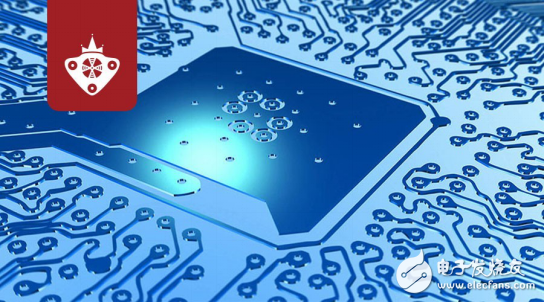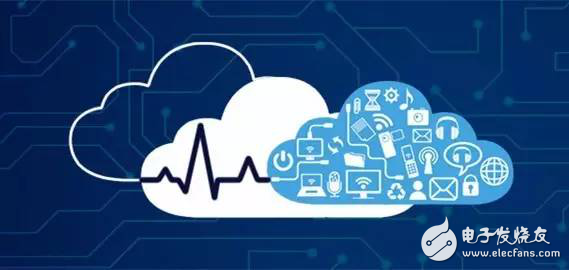[Introduction] "For chip manufacturers, the original market is that you only need to manufacture several products, but each sales volume has a very large scale, but in the new market, you need to manufacture a wide variety of products. Each can only sell hundreds of thousands of pieces. This is undoubtedly describing the emerging Internet of Things market.

Since the birth of the first transistor in the 1940s, the semiconductor industry has been in the world for 70 years. As an "old man", the semiconductor industry has been irresistibly faint in recent years. This slowdown in growth is mainly due to the industry's entry into the so-called "two generations."
The post-Moore era: As more and more silicon circuits are integrated in the same small space, the heat generated is also increasing. At the same time, when the chip line is below the order of 10 nm, the behavior of the electron is limited by the quantum. Certainly, the transistor will become unreliable. The international semiconductor technology roadmap has abandoned Moore's Law, which indicates the death of Moore's Law.
Post-PC era: In the application market, the demand for PCs and consumer electronics products has been turned from a prosperous to the impact of mobile smart terminals (the global PC sales volume has further declined by 10% in 2015). Now, even mobile phones that have been growing for many years. The industry is also hard to escape. Apple's sales fell for the first time in 13 years, and LG's mobile phone business suffered losses for three consecutive quarters.
Fortunately, the computing power of hardware does not represent everything, and the semiconductor industry is beginning to see new features.
The new normal of the development of the semiconductor industry
M&A reorganization frequently
In 2009, NEC and Renesas merged to form a new Renesas. In the year, AMD sold its wafer production line to an IC design company. The world's third foundry company, Global Foundries, was also established in the same period. In 2013, Micron acquired Elpida. Become the world's second largest memory vendor, Avago spent $6.6 billion to acquire LSI that year. In addition, MTK and Mstar formally merged; 2015 is the semiconductor industry's M&A year. In May, AvagoTech acquired Broadcom. (BroadcomCorp.); In June, Intel purchased programmable logic chip giant Altera; in August, Ziguang Group acquired SanDisk, the world's leading memory chip manufacturer, through Western Digital.
Industry order change
Although Moore's Law is a prediction made by Gordon Moore based on his own observations, the semiconductor industry is indeed developing rapidly in accordance with this law. However, from now on, the industry will no longer have a clear line of development planning every two years. Under the impact of the Internet of Things trend, the existing industry order is changing:
The electronics and semiconductor industries have always had high hopes for IoT applications, and bet on a lot of resources to develop related applications - this is because semiconductor products were originally used mainly in PCs and mobile phones, but the number of both has reached a bottleneck, and the Internet of Things era will generate With tens of billions of connected devices, each device requires a corresponding chip. And unlike PCs and mobile phones, many IoT terminals don't need too much local computing power, so semiconductor manufacturers don't have to dig into the physical limits of hardware. New markets and solutions come to the fore – the combination of software and hardware is growing. Close, this will create a new era.
In this new normal, cloud computing, software, and new computing architectures will be key to the advancement of computing technology in the future.
One. Cloud platform helps semiconductor hardware vendors quickly deploy IoT

Daniel Reid, a computer scientist at the University of Iowa, said: "For chip makers, the original market is that you only need to manufacture several products, but each sales volume is very large, but in new In the market, you need to make a wide variety of products, each of which can only sell hundreds of thousands of pieces."
This is undoubtedly describing the emerging Internet of Things market. With the explosive development of the Internet of Things, there have been more than 4.9 million networked devices worldwide at the end of 2015, and there will be more in the future, from semiconductor components to software to applications to services. The industrial chain will benefit from this. New networking devices generated in the consumer, industrial, and medical sectors will drive the market to generate a large demand for new chips, thereby providing new growth points for future semiconductor development.
We are China Leading Manufacturers can supply you the Telecommunication Accessory,including Back Mount Frame,Test Cords, Mounting Frame For 19 Inch Rack.Besides,we can offer you the Earth Bar 8 Pair 10 Pair,Crimping Lug,Disconnection Plug.Welcome to purchase!

Telecommunication Accessory, Test Cords, Back Mount Frame
NINGBO YULIANG TELECOM MUNICATIONS EQUIPMENT CO.,LTD. , https://www.yltelecom.com